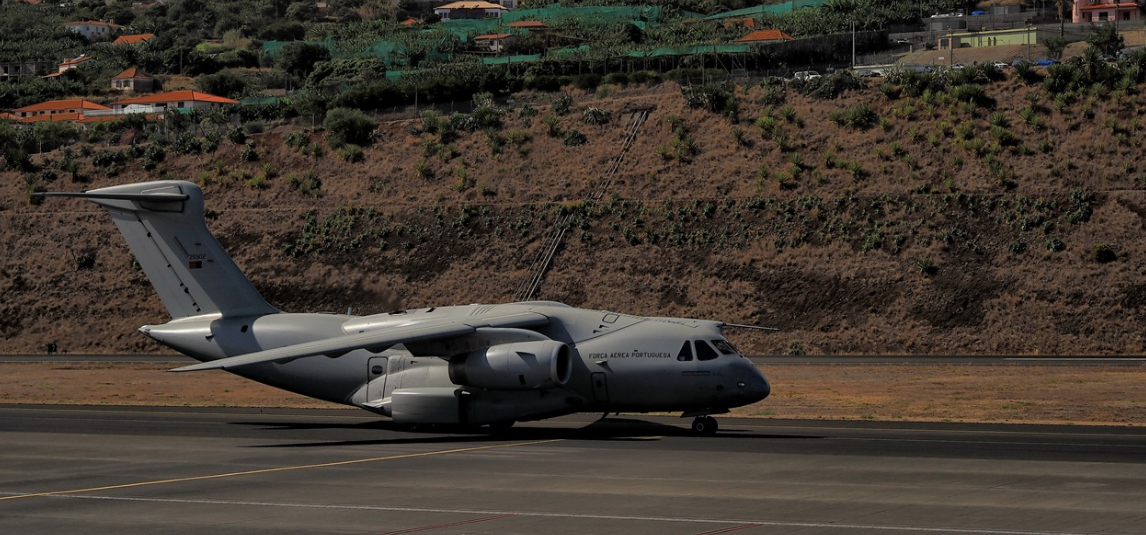The US Has the Biggest Air Force in the Western Hemisphere—and It’s Not Close

The United States enjoys hemispheric supremacy, in large part because no other nation can match US air power.
The US has long enjoyed global hegemony owing to a combination of factors. These include enviable geography, immense domestic resources, unmatched industry, and, at least until recently, the political will to shoulder the burdens of being a “global policeman.” America also benefits from a dearth of hemispheric competition. The simple fact is that no other power in the Americas can offer the United States any meaningful power competition—a significant advantage relative to other aspiring hegemony, in places like Asia or Europe, who have to contend with a saturated arena full of capable adversary nations.

One realm in which America’s hemispheric advantage becomes especially apparent is in air power. Throughout the hemisphere, the United States is without any credible air power competitor. The US fleet, consisting of fifth-generation fighters, fourth-generation fighters, AWACS, tankers, and drones, is far more than any regional air force could hope to counter.
What Kind of Airpower Does South America Have?
The most capable hemispheric competitor to the United States in South America is Brazil, a longtime American ally. Equipped with new Saab JAS 39 Gripen E/F fighters, decent AEW&C, a modern training pipeline, and the KC-390 tanker/airlifter, Brazil’s air force is a professional fighting force—capable in a regional sense, yet still nowhere near the level necessary to compete with the United States.
Chile, another US ally, has a small but high-quality General Dynamics F-16 fleet, a handful of Boeing KC-135 tankers, and a disciplined training regime. But again, Chile is capable only in the regional sense, with clear limitations, falling well short of the levels needed to compete with the US.
Venezuela is a potential adversary, perhaps the lone nation in the hemisphere with the intention and the equipment to be a mild irritant to the United States. Venezuela does have a stock of Sukhoi Su-30MK2 fighters, although the number and availability is unclear. Venezuela also possesses a stock of S-300VM SAMs. Between its Russian fighters and its SAMs, Venezuela may be able to create a localized A2/AD bubble over key sites. Still, Venezuela is beset with political and economic uncertainties: pilot proficiency and operational sustainment are not its high points.
Cuba, long-time ally to the Soviets, is another long-time hemispheric thorn to Washington. It possesses an aging Soviet-era fighter fleet, along with a complement of SAMs. But these aging capabilities make it little more than a nuisance, rather than a genuine competitor.
The United States Has Few Competitors in the Western Hemisphere
The rest of the hemisphere is spartan in terms of air power. Mexico, Columbia, Peru—all are focused on COIN and sovereignty patrols. Argentina’s air fleet is nowhere near US levels. Small countries like Ecuador, Suriname, and Bolivia are obviously not meaningful US competitors.
Canada would perhaps be the most dangerous adversary for the United States in the Western Hemisphere. It has a modern fleet of McDonnell Douglas CF-18s and is transitioning to the Lockheed Martin F-35 Lightning II. And naturally, Canada has notable Arctic operations depth. But—in spite of recent political developments—Canada is not a US competitor, either in mentality or capability. In fact, the US and Canada have partnered for hemispheric defense through NORAD, perhaps the closest joint military command among any two nations on Earth.
Oddly enough, perhaps the greatest source of air power-related friction comes not from hemispheric neighbors but from outer-hemispheric peer competitors, Russia—which occasionally flies Tu-160 and Tu-95 into the Americas on “show-the-flag” ops—and China, which has a growing diplomatic and economic footprint (and thus ISR interest) in the region but no resident combat air power.
Put simply, the United States enjoys hemispheric supremacy, in large part because no other nation can match US air power. Despite localized challenges, and a few A2/AD pockets, any peer-on-peer confrontation against the US would be brief, lopsided, and ugly.
- Questions and Answers
- Opinion
- Motivational and Inspiring Story
- Technology
- Live and Let live
- Focus
- Geopolitics
- Military-Arms/Equipment
- Beveiliging
- Economy
- Beasts of Nations
- Machine Tools-The “Mother Industry”
- Art
- Causes
- Crafts
- Dance
- Drinks
- Film/Movie
- Fitness
- Food
- Spellen
- Gardening
- Health
- Home
- Literature
- Music
- Networking
- Other
- Party
- Religion
- Shopping
- Sports
- Theater
- Health and Wellness
- News
- Culture

